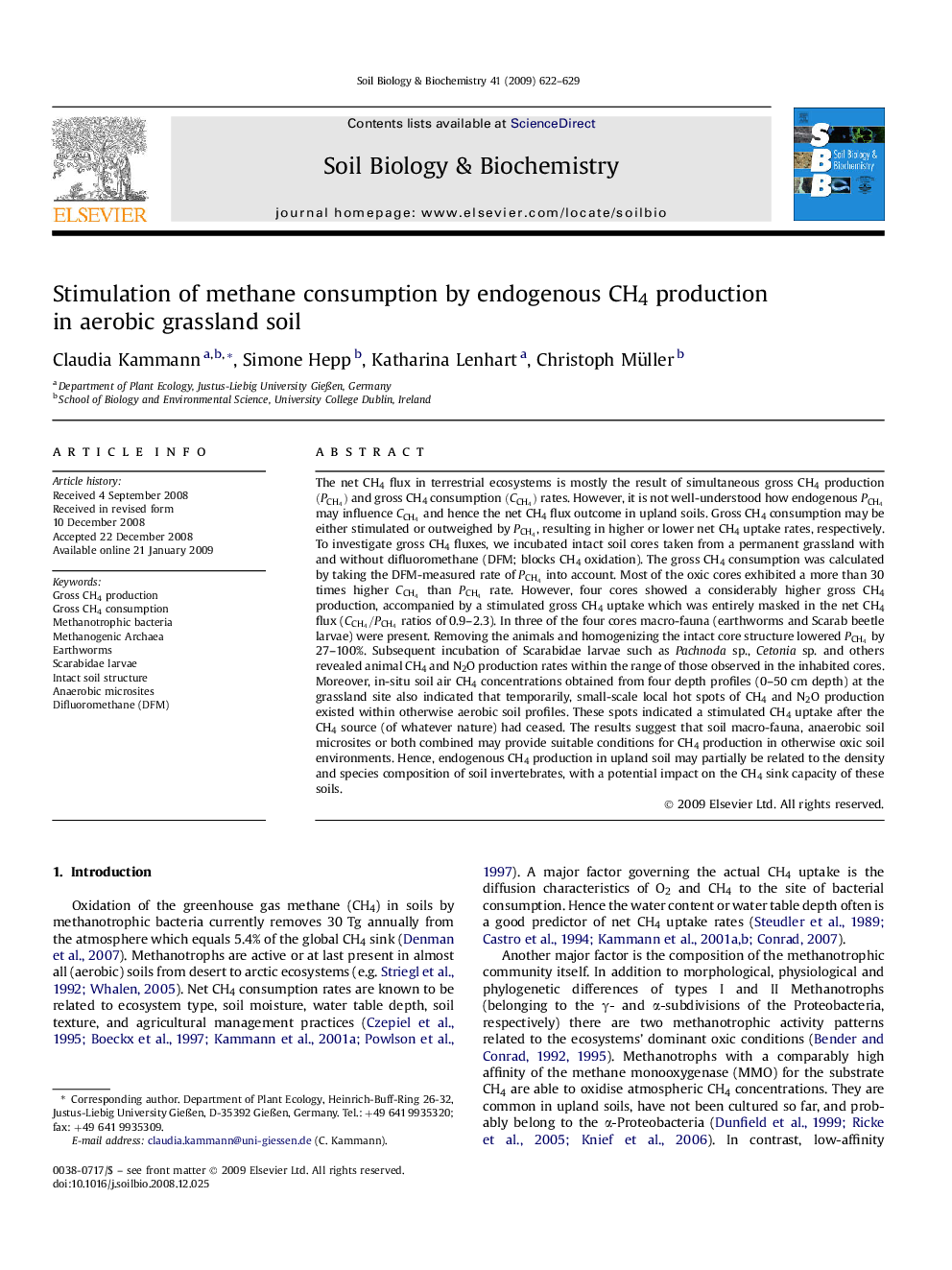| Article ID | Journal | Published Year | Pages | File Type |
|---|---|---|---|---|
| 2026734 | Soil Biology and Biochemistry | 2009 | 8 Pages |
The net CH4 flux in terrestrial ecosystems is mostly the result of simultaneous gross CH4 production (PCH4)(PCH4) and gross CH4 consumption (CCH4)(CCH4) rates. However, it is not well-understood how endogenous PCH4PCH4 may influence CCH4CCH4 and hence the net CH4 flux outcome in upland soils. Gross CH4 consumption may be either stimulated or outweighed by PCH4PCH4, resulting in higher or lower net CH4 uptake rates, respectively. To investigate gross CH4 fluxes, we incubated intact soil cores taken from a permanent grassland with and without difluoromethane (DFM; blocks CH4 oxidation). The gross CH4 consumption was calculated by taking the DFM-measured rate of PCH4PCH4 into account. Most of the oxic cores exhibited a more than 30 times higher CCH4CCH4 than PCH4PCH4 rate. However, four cores showed a considerably higher gross CH4 production, accompanied by a stimulated gross CH4 uptake which was entirely masked in the net CH4 flux (CCH4/PCH4CCH4/PCH4 ratios of 0.9–2.3). In three of the four cores macro-fauna (earthworms and Scarab beetle larvae) were present. Removing the animals and homogenizing the intact core structure lowered PCH4PCH4 by 27–100%. Subsequent incubation of Scarabidae larvae such as Pachnoda sp., Cetonia sp. and others revealed animal CH4 and N2O production rates within the range of those observed in the inhabited cores. Moreover, in-situ soil air CH4 concentrations obtained from four depth profiles (0–50 cm depth) at the grassland site also indicated that temporarily, small-scale local hot spots of CH4 and N2O production existed within otherwise aerobic soil profiles. These spots indicated a stimulated CH4 uptake after the CH4 source (of whatever nature) had ceased. The results suggest that soil macro-fauna, anaerobic soil microsites or both combined may provide suitable conditions for CH4 production in otherwise oxic soil environments. Hence, endogenous CH4 production in upland soil may partially be related to the density and species composition of soil invertebrates, with a potential impact on the CH4 sink capacity of these soils.
